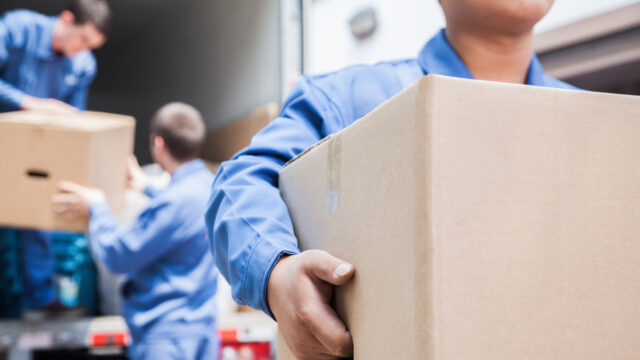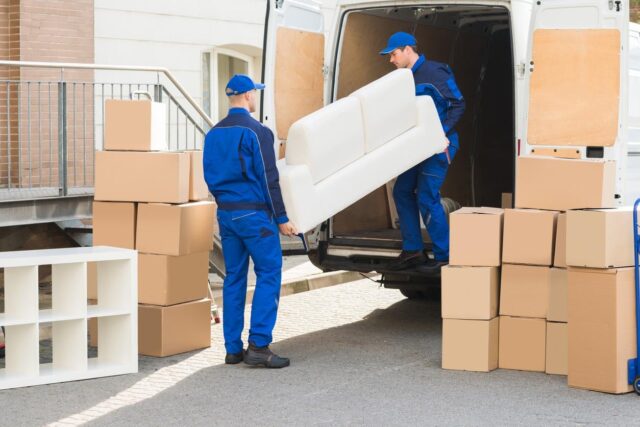
The thought of moving, particularly long-distance, can sometimes seem overwhelming. However, with a solid strategy and the right mindset, what initially feels like an uphill battle can be transformed into a smooth, stress-free transition. Let’s delve into fundamental steps to help you navigate the complexity of long-distance moving.
Finding a Reliable Moving Company

Your choice of moving company can make or break your moving experience. Start by seeking out recommendations from friends and family who have recently moved. Personal experiences often provide the most reliable insight into a company’s reliability and service quality. Online reviews and ratings can also be a valuable source of information.
Once you have a list of potential companies such as STC Movers, request detailed quotes and compare the services they offer. Look beyond just the bottom-line price; consider factors such as whether they provide insurance, their cancellation policy, and their protocol for handling delicate items. A reputable company will be transparent about their charges and be able to answer any questions you have.
Lastly, verify the company’s license and credentials. In the United States, for instance, long-distance movers should be registered with the Federal Motor Carrier Safety Administration (FMCSA). By taking these steps, you ensure that the company you choose is not only reliable but also legitimate.
Planning and Organization
The key to any successful move is planning. Begin by setting a realistic timeline. This means marking key dates, such as the time you plan to start packing, your actual moving date, and when you aim to be fully settled in your new home. Plan backward from your moving day, ensuring you allow ample time for each task to avoid last-minute panics. Invest in a good planner or utilize digital tools like Google Calendar to keep track of your tasks.
Equally important is creating a comprehensive inventory list. Catalog each item in your home, noting its current condition, value, and whether it is to be sold, donated, or moved. This list will be a lifesaver when it comes time to pack and unpack and also provides a record for insurance purposes. Take photographs of valuable or delicate items as additional proof of their condition.
To further streamline your organization, consider creating a ‘moving binder’. This binder can house all your essential moving documents, such as your inventory list, moving company details, housing documents, and any important receipts. Keeping all these documents in one place will make the moving process more organized and less stressful.
Downsizing and Decluttering

Organize a garage sale or utilize online marketplaces to sell unwanted items. You’d be surprised at how this could offset some of your moving costs. For items in good condition that you can’t sell, consider donating to local charities or thrift stores. It’s important to remember that decluttering isn’t about discarding everything but rather making conscious decisions about what to keep and what to let go.
Remember, the goal of downsizing isn’t only to reduce moving costs. It also helps create a fresh start in your new home. By only taking items that serve a purpose or hold sentimental value, you’re curating a space that truly feels like home.
Packing Tips and Techniques
Start by gathering all the packing materials you’ll need: boxes of various sizes, packing tape, bubble wrap, and markers for labeling. If possible, choose eco-friendly options to make your move more sustainable.
Pack room by room to make the process more manageable. Begin with rooms you use less frequently, like the guest room or storage areas. For each box you pack, note its contents in your inventory list and clearly label it with the room it belongs to. This will streamline the unpacking process immensely.
When packing, be mindful of the weight distribution in your boxes. Heavy items like books should be packed in smaller boxes, while lighter but bulkier items can go in larger boxes. Fragile items should be wrapped carefully and placed in boxes with ample padding. Remember, it’s better to over-protect than under-protect your valuable items.
Efficient Loading and Unloading

Loading box by box allows for an organized unloading process. Keep boxes from the same room together and ensure that the labels are visible. Additionally, load items you’ll need immediately last so they’re the first to be unloaded.
Unloading should ideally be a reverse process of loading. Begin by unloading the last loaded items, and checking them off your inventory list as you go. Be patient and resist the urge to rush the process. Remember, it’s about starting your new journey on a high note, not finishing the move as quickly as possible.
Transportation and Logistics
When moving long-distance, the logistics and transportation can be complex. If you’re driving, ensure your vehicle is in good condition and plan your route carefully, accounting for weather conditions and rest stops. Always have a contingency plan in place in case of unexpected events.
For those who plan to fly, consider shipping your car and any other large items ahead of time. There are several reputable long distance moving companies that specialize in transporting vehicles across the country. Again, make sure to research and compare different options before making a decision.
Importantly, keep essential items and important documents with you during the move. This includes items like medications, clothing, toiletries, and essential electronics. These should be easily accessible throughout the move.
Managing Your Finances

Moving can be expensive, but with careful budgeting, you can avoid unnecessary financial stress. Begin by creating a detailed moving budget, factoring in all potential costs – from packing materials to moving insurance. Don’t forget to account for post-move expenses such as utility setup fees and home improvements.
Explore different ways to save money. This could include the packing yourself, selling unnecessary items, or even choosing to move in the off-peak season when moving rates can be lower.
Remember, unexpected expenses often arise, so it’s wise to have a contingency budget. This financial buffer can be a lifesaver when facing unforeseen costs or emergencies.
Settling into Your New Home
The process of moving doesn’t end once you’ve unloaded the last box; settling into your new home is an important final step. Start by cleaning your new space thoroughly before you begin unpacking. It’s much easier to clean an empty room, and it ensures a fresh start in your new home.
Once cleaning is done, begin the unpacking process. Using your inventory list and the labels on your boxes, unpack room by room. Prioritize essential rooms such as the bedroom and kitchen, so you can sleep and eat comfortably even if the rest of the unpacking isn’t complete.
Lastly, take the time to explore your new neighborhood. Find the closest grocery store, pharmacy, and other essential services. Introduce yourself to your neighbors and start building new connections. Remember, home is more than just a place, it’s a feeling of belonging and comfort, and this comes with time and familiarity.
Conclusion
Long-distance moving is undoubtedly a monumental task, but with careful planning, organization, and a healthy dose of patience, it can be a smooth and even exciting experience. Here’s to new beginnings and seamless transitions!









